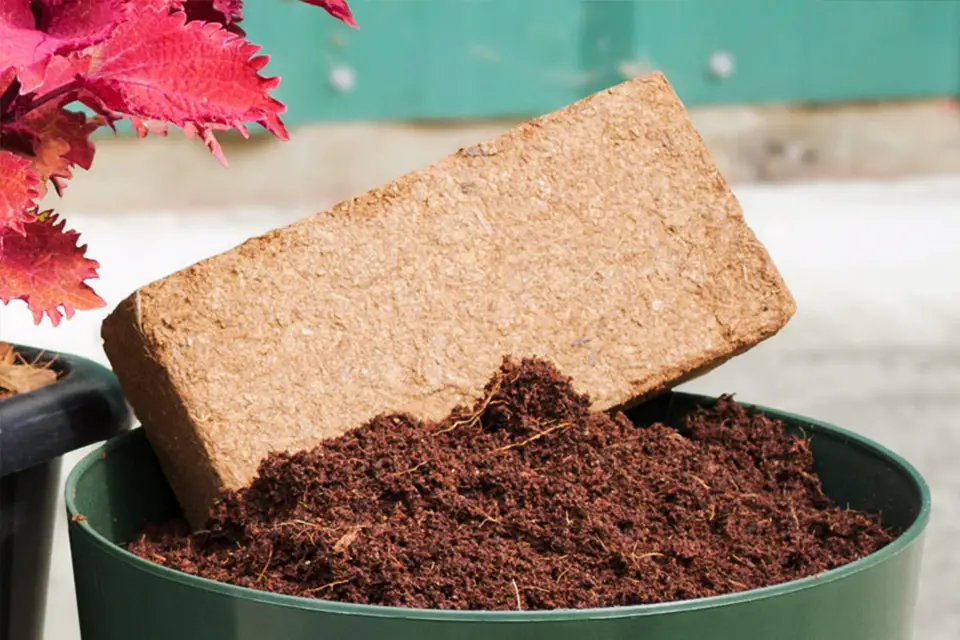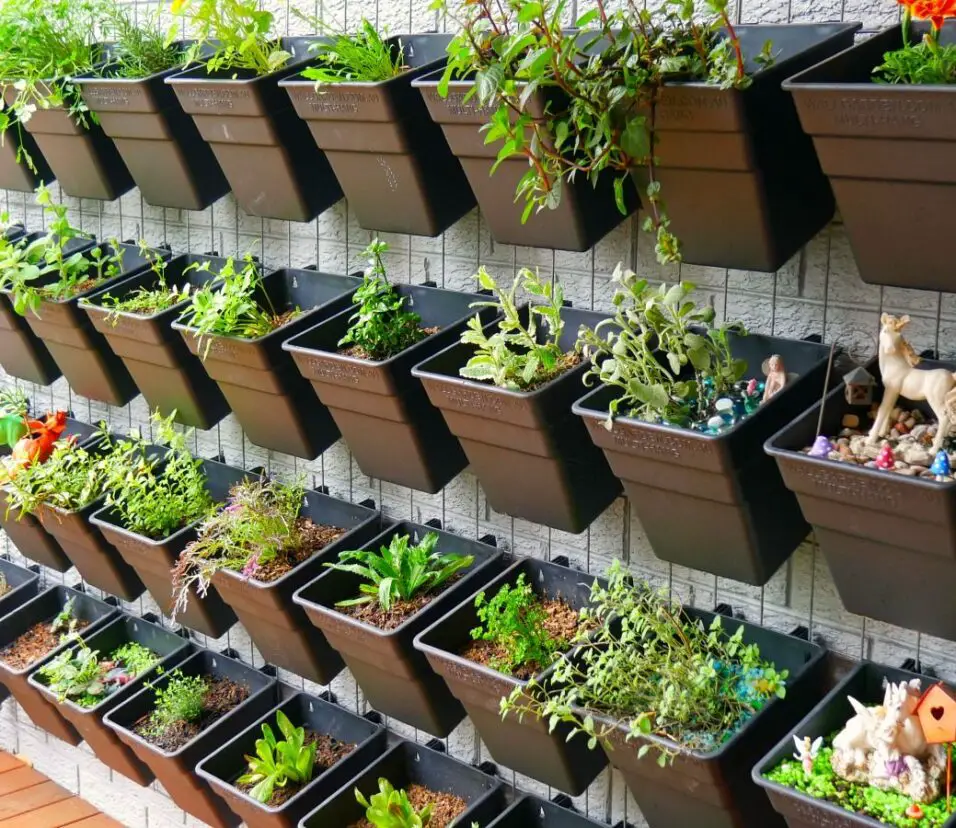How To Use Coconut Coir In Gardening
Introduction
How To Use Coconut Coir In Gardening: Coconut coir, also known as coco coir, is a versatile and sustainable material that has gained popularity in gardening in recent years. Derived from the fibrous husk of coconuts, coconut coir is an excellent alternative to traditional soil and can be used in a variety of rain garder applications. Whether you are a seasoned gardener or a beginner, learning how to use coconut coir in your garden can greatly enhance your plants’ growth and overall health.
One of the main benefits of using coconut coir in gardening is its ability to retain moisture. Coconut coir has a high water-holding capacity, which means it can hold more water than traditional soil. This is especially beneficial in dry climates or for plants that require consistent moisture. Additionally, coconut coir has excellent drainage properties, allowing excess water to flow through and prevent root rot. By using coconut coir as a growing medium, you can ensure that your plants receive the right amount of water without the risk of overwatering.
Another good thing about planting with coconut coir is that it lasts for a long time. When you use coconut coir in your yard, you not only cut down on waste, but you also help make gardening more sustainable and eco-friendly. Also, coconut coir is biodegradable, which means it will break down on its own over time, adding organic matter to the soil.

How do you add coconut coir to soil?
When creating new garden beds or digging a hole for a plant, add about 1:3 coconut coir with native soil and compost. Incorporate the coconut coir and native soil together to create a clumpy friable structure.
Adding coconut coir to soil is a great way to improve its structure and fertility. Coconut coir, also known as coco peat or coco fiber, is a natural byproduct of coconut processing. It is a renewable resource that is widely used in gardening and horticulture. Coconut coir has excellent water retention properties and is rich in nutrients, making it an ideal addition to soil.
To add coconut coir to soil, start by preparing the coir. It usually comes in compressed blocks or bricks, so you will need to rehydrate it before use. Place the coir in a large container and add water. Allow the coir to soak for a few hours or overnight until it expands and becomes fluffy. Drain any excess water before using the coir.
Next, prepare the soil by loosening it with a garden fork or tiller. This will help improve aeration and drainage.
Once the soil is prepared, spread the rehydrated coconut coir evenly over the surface. Use a garden rake or hoe to mix the coir into the top few inches of soil.
After incorporating the coconut coir into the soil, water the area thoroughly to help settle the coir and ensure good contact with the soil. Over time, the coir will break down and improve the soil’s water-holding capacity and nutrient content. It will also help promote healthy root growth and reduce the need for frequent watering.
Can you put coco coir on top of soil?
Coir mulch mats:
Actually, you can put coco coir on top of dirt. Coconut husk, which is also called coco peat, is used to make coco coir, which is a natural and long-lasting growing medium. It is often added to dirt or used as a growing medium on its own in gardening and horticulture. This can be especially helpful in dry, hot places where saving water is important. Also, the coco coir mulch stops weeds from growing, so you don’t have to use pesticides or pull them out by hand.
Along with being a mulch, coco coir can also be used to improve the land. When mixed into the top layer of soil, coco coir makes the building better by making it hold more water and drain better. This can be very helpful in heavy clay soils that tend to get packed down and wet. The better soil structure lets plants grow stronger roots and take in more nutrients.
There is also a lot of organic matter in coco coir, which helps the dirt grow plants. Coconut fiber breaks down over time, releasing nutrients into the soil that plants can use more easily. This may cut down on the need for synthetic fertilizers and help plants grow in a better, more stable way.
You can use coco coir on top of dirt as a mulch or to improve the soil. It’s useful in gardens and horticulture because it keeps water in the soil, makes the soil more stable, and makes nutrients more available.
Can you plant directly in coco coir?
You can grow almost any plant in coco coir as the material acts just like any other potting soil or peat. As long as you know what you are doing, almost all plants will benefit from being planted in coco coir. You can use coco coir to grow everything from exotic plants, to even more common plants and flowers.
Unfortunately, you can’t plant straight in coco coir. Coconut fiber, also called coco coir, is a natural and long-lasting growing medium made from coconut husks. For many reasons, gardeners and horticulturists use it instead of regular dirt.
As a result, coco coir can hold more water than regular soil for longer lengths of time. As a result, it is perfect for plants that need constant water, like tropical plants or plants grown in dry areas. Additionally, coco coir has a high cation exchange capacity, which means it can effectively hold and release nutrients, giving plants a steady supply of important elements.
Coco coir needs to be properly prepared before it is planted.
There are usually blocks or bricks of coco coir that are packed and need to be wetted and spread out before they can be used. Allow the coco coir to soak in water until it grows and gets fluffy. By doing this, any extra salts or other impurities in the coir are washed away.
As long as the coco coir is properly wet, it can be used as a growing medium on its own or combined with other materials like perlite or vermiculite to ensure better draining. You should know that coco coir has a balanced pH, which means it is neither acidic nor alkaline. Therefore, it can be used for many kinds of plants, since it is easy to change the pH level to what you want by adding the right amendments.
Can be used straight for planting, coco coir is a flexible and long-lasting growing medium. Gardeners and horticulturists like it because it effectively holds water and nutrients. You can give your plants the best conditions for growth by properly making and using coco coir.
Do you have to soak coco coir before planting?
Once you know what makes coco coir different from regular soil, it’s pretty easy to use it to grow plants in pots. Coco coir comes in the form of a solid, small “brick.” All you have to do is soak it in water for at least an hour, and it will grow up to seven times its original size.
Yes, you should soak coco coir before planting it. The woody husks of coconuts are used to make coco coir, which is also called coco peat. It is used a lot in farming and horticulture because it keeps water in and lets air flow through it well. But when you buy coco coir, it might be pretty dry and packed down, which can make it less effective at absorbing and holding water.
Soaking coco coir before planting makes the fibers more flexible and rehydrated. This makes it easier to work with and makes sure it can hold and release water properly. This is especially important for young plants that need steady amounts of water to grow well. You can make sure that the coco coir is fully soaked and ready to give your plants the water they need by letting it soak.
To use clean water that doesn’t have chlorine when you soak coco coir.
There are chemicals in tap water that could hurt the good bacteria that are in the coco coir. To get rid of the chlorine in tap water, you should either use filtered or boiled water or leave it out for at least 24 hours.
To soak coco coir, just put the amount you want to soak in a jar and fill it up with water until it’s saturated. Soak the coir for at least 30 minutes, or until it has taken in enough water to fully shrink and stretch. After letting the coco coir soak, you can squeeze out any extra water before using it as a growing medium.
What are the disadvantages of coconut coir?
The main problem with coir is that it often has a lot of salt in it, especially in lower grades. Before it is used, coir that is high in salts should be leached. It takes longer for cations to exchange with coir, and it has a lot of sodium and potassium.
Coconut coir, sometimes written as coco coir, is a natural fiber that is taken from the husk of coconuts. It has become more famous as a long-lasting alternative to peat moss in gardening and horticulture over the past few years. There are some good things about coconut coir, but there are also some bad things that you should think about.
One big problem with coconut coir is that it has a lot of salt in it. During the making process, coir fibers are often soaked in saltwater to get rid of dirt. The finished product may, however, have a lot of salt because of this. If you use too much coconut coir or don’t rinse it well enough, it can cause salt to build up in the soil, which is bad for plants. This is a big problem for plants that can’t handle salt or in places where the soil naturally has a lot of salt in it.
pH Considerations for Coconut Coir as a Growing Medium
Coconut coir may also have small amounts of heavy metals in it. Heavy metals can be found in the coir fibers because the husks of coconuts can soak them up from the surroundings. Even though the levels are usually low and not a big deal, it is still important to buy coconut coir from trusted companies that test the product for quality to make sure it is safe.
Coconut coir, which is also called coco peat, is a useful and long-lasting material for gardening that has many uses. One of the best things about using coconut coir is that it keeps water in very well. It can hold up to 10 times its own weight in water, so plants can always get water even when it’s dry outside. Because of this, it is especially helpful for farmers who live in dry areas or have trouble watering their plants regularly.
In addition to being able to hold water, coconut coir is also very good at letting it drain. It lets extra water flow through, which keeps the roots from getting too wet and increasing the risk of root rot. This is very important for plants that don’t like getting too much water. In addition, coconut coir is pH-neutral, which means it won’t change the soil’s pH levels. This helps farmers who need to keep the pH levels of their plants at certain levels.
How do you prepare coconut coir for use in gardening?
Preparing coconut coir for use in gardening is a simple process that involves rehydrating and fluffing the coir. First, you will need to soak the coir in water to rehydrate it. Place the coir in a large container or bucket and add water until it is fully submerged. Allow the coir to soak for at least 30 minutes, or until it has absorbed all the water and expanded in size.
Once the coir is fully rehydrated, you can fluff it up to create a loose and airy texture. This can be done by hand or with a garden fork or trowel. Gently break apart any clumps and separate the fibers to ensure even distribution throughout your garden soil.
What types of plants or gardens are best suited for coconut coir?
Coconut coir is a versatile and beneficial addition to any garden, but certain plants and gardens can particularly benefit from its use. One type of garden that is well-suited for coconut coir is container gardening. Container gardens, such as those grown in pots or hanging baskets, often require a lightweight and well-draining growing medium. Coconut coir fits the bill perfectly, as it is lightweight and has excellent water retention properties. It allows for proper aeration and drainage, preventing waterlogged roots and promoting healthy plant growth.
In addition to container gardens, coconut coir is also ideal for hydroponic systems. Hydroponics is a method of growing plants without soil, using a nutrient-rich water solution instead. Coconut coir acts as an excellent growing medium in hydroponics, providing support for the plants’ roots and retaining moisture and nutrients. Its fibrous structure allows for optimal root development and nutrient absorption, resulting in healthier and more productive plants.
Coconut coir is beneficial for plants that require acidic soil conditions. Some plants, such as blueberries, azaleas, and rhododendrons, thrive in acidic soil. Coconut coir has a naturally low pH level, making it an ideal choice for these acid-loving plants. It helps create the right soil environment for these plants to flourish, promoting vibrant foliage and abundant blooms.
Are there any potential drawbacks or limitations to using coconut coir in gardening?
While coconut coir offers numerous benefits for gardening, it is important to be aware of its potential drawbacks and limitations. One limitation is that coconut coir has a high water-holding capacity, which means it can retain moisture for longer periods. Therefore, it is crucial to monitor the moisture levels and adjust watering accordingly when using coconut coir.
Another drawback of coconut coir is its high salt content. Coconut coir is often sourced from coastal areas where saltwater intrusion is common. If not properly processed and rinsed, the salt content in coconut coir can negatively affect plant growth and health. To mitigate this issue, it is recommended to thoroughly rinse the coir before use or opt for low-salt varieties.
Additionally, coconut coir has a neutral pH, which may not be suitable for all plants. Some plants prefer acidic or alkaline soil conditions, and using coconut coir alone may not provide the ideal pH level. In such cases, it is necessary to amend the coir with appropriate additives to adjust the pH to the desired range.
Can coconut coir be used as a substitute for other types of soil amendments or fertilizers in gardening?
Yes, coconut coir can be used as a substitute for other types of soil amendments or fertilizers in gardening. It has a high water holding capacity, which helps to prevent soil from drying out too quickly. This is especially beneficial in dry climates or for plants that require consistent moisture.
In addition to its moisture retention properties, coconut coir also has a neutral pH level, which means it won’t alter the acidity or alkalinity of the soil. This makes it a versatile option for a wide range of plants and gardens. It can be used as a standalone growing medium or mixed with other soil amendments to create a custom blend.
Furthermore, coconut coir is a sustainable and eco-friendly option for gardeners. It is a byproduct of the coconut industry and is considered a renewable resource. Unlike peat moss, which is harvested from bogs and takes centuries to regenerate, coconut coir can be produced in large quantities without causing harm to the environment.

Conclusion
Conut coir is a versatile and sustainable alternative to traditional gardening materials. It offers numerous benefits for both plants and the environment. By using coconut coir in gardening, gardeners can improve soil structure, retain moisture, and enhance nutrient availability for plants. Additionally, coconut coir is a renewable resource that helps reduce waste and promote sustainability.
One of the key advantages of coconut coir is its ability to improve soil structure. Its fibrous texture helps loosen compacted soil, allowing for better aeration and root development. This is especially beneficial for heavy clay soils that tend to become waterlogged. By incorporating coconut coir into the soil, gardeners can create a more favorable environment for plant growth and improve overall soil health.
Coconut coir has excellent water retention properties. It can hold up to 10 times its weight in water, ensuring that plants have a steady supply of moisture. This is particularly advantageous in dry or arid climates where water conservation is crucial. Coconut coir also helps prevent soil erosion by reducing water runoff, allowing plants to absorb water more efficiently.
Another significant benefit of using coconut coir in gardening is its ability to enhance nutrient availability. Coconut coir naturally contains essential plant nutrients such as potassium, magnesium, and iron. As it decomposes, these nutrients are slowly released into the soil, providing a steady and long-lasting supply for plants. This reduces the need for frequent fertilization and promotes healthier plant growth.
Coconut coir is a valuable addition to any gardener’s toolkit. Its ability to improve soil structure, retain moisture, and enhance nutrient availability make it an excellent choice for sustainable gardening practices. By utilizing coconut coir, gardeners can create healthier and more productive gardens while also contributing to environmental conservation.








